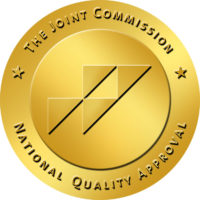You reach to your side to grab something, only to feel a familiar pain in your hips. What exactly is the problem?
There’s no simple answer to that question. Hip pain is common, and it has many causes.
In fact, hip pain is as common as knee pain. The knee and hip joints are the largest in the body and they help support the body’s weight. This makes them susceptible to injury, arthritis and other issues.
Let’s take a look at some basics about hip pain.
Hip pain: Understanding the anatomy
To fully understand and treat hip pain, it helps to have a good knowledge of the hip and its many parts.
The hip joint itself is where the femur (the ball of the thigh bone) connects with the pelvis at a socket. Cartilage covers both the femur and the socket (called the acetabulum).
The hip joint is lined by a tissue called the synovium, which produces a fluid that lubricates the joint and feeds the cartilage. The ligaments around the hip joint attach the femur to the pelvis, and there are also many muscles and tendons around the joint. Tiny sacs called bursae help muscles and tendons glide around the hip joint.
The causes of hip pain
There are many causes of hip pain, including:
- Arthritis, which leads to hip joint inflammation and a breakdown of the cartilage around your hip bones.
- Bursitis, which is an inflammation of the bursae found between bone, muscles and tendons.
- Hip fracture, which is more common as we get older and bones weaken.
- Hip labral tear, which is a tear in the cartilage (the labrum) around the outside rim of your hip joint socket.
- Osteonecrosis, which is a condition that occurs when blood flow to the hip bone slows and the bone tissue dies.
- Tendinitis, which is the inflammation of tendons that attach bones to muscles.
How hip pain manifests
Contrary to its name, hip pain doesn’t always just show up right in your hip. You may experience it in a number of places in your lower extremities.
Where you feel the pain is often a good indicator of the source of the pain, too.
If you’re feeling hip pain on the outside of the hip, in your upper thigh or outer buttock, your pain is likely the result of issues related to the muscles, ligaments, tendons or soft tissue.
If you’re feeling hip pain on the inside of your hip or in the groin, your pain is likely the result of problems with the hip joint.
Pain in other areas of the body, including the back, can also radiate to the hips. In addition, you may experience pain in other areas of the body, like the knees, that’s actually caused by your hips.
Depending on its source, hip pain may be temporary, or it may become chronic. If you experience hip pain, you may have a number of symptoms beyond pain, including limping, a loss of motion, warmth in the area, and swelling and tenderness in the area.
How hip pain is treated
Because there are so many causes of hip pain, there are also many different types of treatment.
If you’re just beginning to experience hip pain, basic at-home treatment may help you find relief. Try using an over-the-counter pain reliever like acetaminophen or an anti-inflammatory like ibuprofen to ease symptoms. You may also find that applying ice to the affected area for 10 to 15 minutes a few times a day helps relieve pain.
If at-home treatment doesn’t seem to help your pain, talk with your doctor about what you’re experiencing. He or she will identify the underlying cause of your pain and treat it based on that cause.
For example, if your hip pain is the result of arthritis, your doctor may prescribe medications, including oral and injected steroids. He or she may also recommend therapeutic exercises and stretches designed to reduce pain and improve joint mobility.
When hip pain needs immediate treatment
While some hip pain is minor and can be relieved on your own, some symptoms indicate that medical attention is needed. These include:
- sudden, unexplained hip pain
- a fall or injury causing the pain
- a deformed or bleeding hip joint
- a popping noise in the hip joint
- an inability to put weight on the hip, or an inability to move the hip or leg.
If you experience a hip injury or ongoing hip pain, talk with your doctor about your symptoms.
Dr. Matthew Higgins is a fellowship-trained orthopaedic surgeon at Erlanger Orthopaedics. He offers both conservative treatment through medication and activity modification, and the latest minimally-invasive procedures if non-surgical therapies fail to provide relief. Learn more about Dr. Higgins.
The Erlanger Orthopaedic Institute is a Gold Seal of Approval® Certified Center of Excellence for Primary Hip and Knee Replacement designated by The Joint Commission. This certification is for Joint Commission-accredited hospitals, critical access hospitals, and ambulatory surgery centers seeking to elevate the quality, consistency, and safety of their services and patient care.








